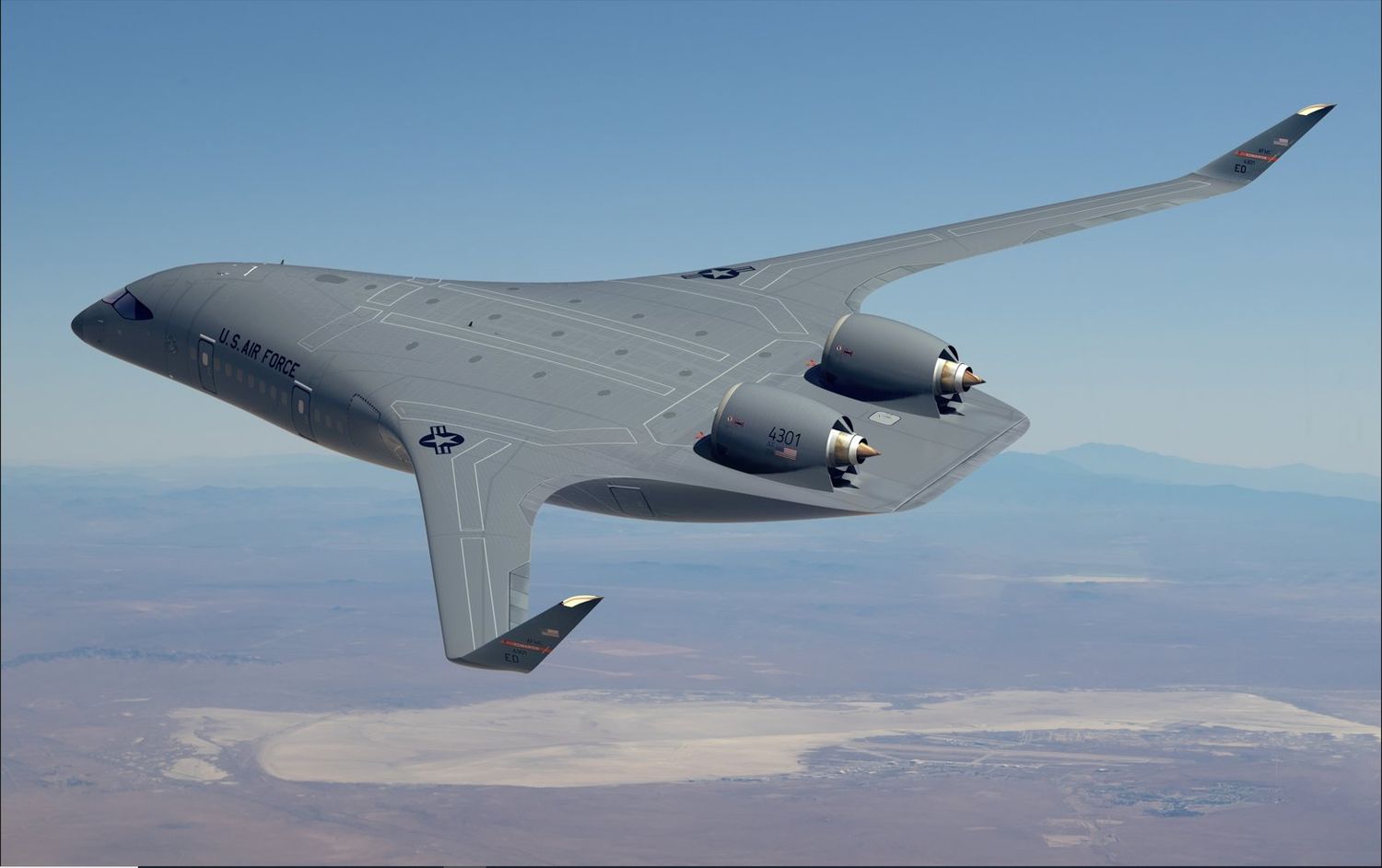The U.S. Department of the Air Force selected JetZero for the next phase of a BWB (Blended Wing Body) prototype aircraft project.
The goal of the contract awarded to JetZero is to mature BWB technology and demonstrate its capabilities, giving the Department of Defense (DoD) and commercial industry more options for their future air platforms.
With a design that differs from a traditional tube-and-wing aircraft, the BWB blends the aircraft body into its high-aspect-ratio wing, decreasing aerodynamic drag by at least 30% and providing additional lift. This increased efficiency will enable extended range, more loiter time, and increased payload delivery efficiencies, capabilities that are vital to mitigating logistics risks.
“Blended wing body aircraft have the potential to significantly reduce fuel demand and increase global reach,” said Secretary of the Air Force Frank Kendall. “Moving forces and cargo quickly, efficiently, and over long distance is a critical capability to enable national security strategy.”
The BWB design allows for various military transport configurations. Together, these aircraft types account for approximately 60% of the USAF’s total annual aviation fuel consumption.
Blended Wing Body
Although the BWB concept has been around for decades, being tested by NASA in its X-28 prototypes and by Airbus in its MAVERIC model, it is only now that advances in structural design, materials technology, manufacturing and other areas would be mature enough to allow large-scale production.

The commercial industry, including passenger airlines and air cargo carriers, can also benefit from the development of this technology, increasing available cabin or cargo space while reducing fuel operating costs.
JetZero BWB design
Under the terms of the award from DoD’s Defense Innovation Unit (DIU), JetZero will receive $235 million over a four-year period, culminating in first flight of the full-scale demonstrator by the first quarter of 2027.
JetZero is collaborating with Northrop Grumman and Scaled Composites, who bring extensive experience in advanced aircraft design, manufacturing, and mission systems integration to build and test the full-scale demonstrator. Also, Jet Zero has selected Pratt & Whitney GTF™ engines to power the demonstrator, with Pratt & Whitney GATORWORKS supporting JetZero with design and integration of the propulsion system within the demonstrator.

According to the company, its design dramatically improves aerodynamic efficiency over traditional aircraft, which are fundamentally unstable and require large tail surfaces, creating even more weight and drag.
The Blended Wing Body is a naturally stable design that requires no tail surfaces, eliminating unnecessary complexities. A shorter, wider fuselage is blended to mimic the wing to provide lift. This reduces the surface area required, creating a lighter aircraft with less drag.
With less drag and weight, the engine size is reduced, further reducing drag and weight. The result is an aircraft with the passenger capacity and range of a small wide-body aircraft that uses the engines of existing narrow-body aircraft, enabling a significant reduction in fuel consumption and environmentally harmful emissions.


Comentarios
Para comentar, debés estar registrado
Por favor, iniciá sesión